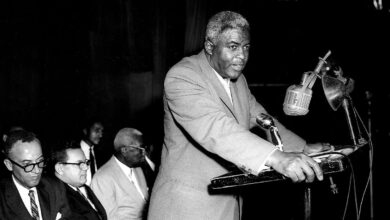

It was painful. Thursday night’s loss to Detroit in the deciding game of the Division Series was painful, not because the Yankees were blown away by the Tigers, but because there were so many wasted opportunities. Too many bases-loaded opportunities that were squandered by the ice-cold bats of Alex Rodriguez and Nick Swisher. For me, a 3-2 loss is way more devastating than a 10-1 loss.
All this aside, now that the Yankees’ postseason is over, they enter the offseason with more than a few pressing questions. Here are the top five issues the organization will need to address during the winter months:
1. Will CC Sabathia opt out of his contract and, if so, how much will the Yankees overpay for him?
My guess is that Sabathia is opting out. Why wouldn’t he? He surely would like to be making Cliff Lee money (thanks for continuing to screw us over, Cliffy). I heard some sports radio caller (a Yankees fan mind you) say that the Red Sox should make a move for CC. And they may, if only to drive up his price. But Sabathia and his family have supposedly really settled into the New York area. If he does bolt, it would be to the West Coast; however, it’s doubtful those teams will have the kind of money to entice him. The Yankees will most likely overpay and be saddled with yet another ridiculous A-Rod-like contract.
2. What about the rest of the starting rotation?
This was the same question that plagued the Yankees last offseason after Cliff Lee went to the City of Brotherly Love. While Ivan Nova had a very solid rookie season, it remains to be seen if he will progress or regress next season. Will Phil Hughes finally be healthy and live up to expectations? Will we be treated to more of A.J. Burnett’s head-scratching mound meltdowns? Do the Yankees take another chance on retreads Freddy Garcia and Bartolo Colon? My guess is that after locking up CC, they go after another free agent starter like C.J. Wilson (this way they can have the all initials rotation) or Mark Buerhle. Then there are the kids: Dellin Betances, Andrew Brackman and Manny Banuelos. It would be nice to see another prospect step up like Nova did.
3. Does Brian Cashman return as GM?
Cashman has said that he wants to return, but there’s always speculation he may need a change of scenery or he doesn’t want to work with a $200 million payroll and would rather be the GM who comes riding in on his white horse for the Cubs. Cashman held steadfast against the ridiculous contract for reliever Rafael Soriano (a battle he lost), but he also was throwing around ridiculous contract proposals for a disinterested Cliff Lee. I like that he was able to hold onto the Yankee prospects and had some great, unexpected success by getting the likes of Garcia and Colon. Of course, the way he handled the contract negotiations of Yankee Dynasty icons Derek Jeter and Mariano Rivera was abysmal and a total PR mess. Overall, I don’t know who’s out there who knows the inner workings and idiosyncrasies of the Yankees any better. I doubt Cashman is leaving the Bronx just yet.
4. What happens to Jorge Posada?
The catcher-turned-DH looked old for most of the season. Although he did pick up steam down the stretch and was one of the few hitters who actually performed solidly during the ALDS. A switch hitter, Posada was just awful from the right side of the plate and was later platooned. It would be nice if he retired and walked away from the game that seems to be rapidly walking away from him. Of course, if he wants to continue to play, Yankee fans may have to get used to the sight of one of the Core Four in a Seattle Mariners or Oakland A’s uniform. (Shudder … shudder.) The Yankees are going to have a plethora of DHs down the road (can’t wait to see A-Rod stepping up to the plate with his walker) so this is the probably the last time fans will see him in the pinstripes until a future Old Timer’s Day.
5. Where to play Jesus Montero?
Probably not the Yankees biggest concern, but Montero can indeed hit and seemed unfazed by the pressure of the playoffs. He is probably not ever going to be a big-league catcher (Austin Romine is being groomed to be the Yankees catcher of the future). There is talk of moving Montero into the outfield, and his defense couldn’t be any worse than Nick Swisher’s. (Yes, Swisher, whose contract is up, has improved, but still has the uncanny ability of turning a playable ball into a triple.) The Yankees need to find a way to get this powerful young hitter into the everyday lineup.
Live betting technologie evolutie bij bookmakers verkent Winstwijzer
De wereld van sportweddenschappen heeft een revolutionaire transformatie ondergaan sinds de introductie van live betting technologie. Deze innovatie heeft niet alleen de manier waarop gokkers hun inzetten plaatsen fundamenteel veranderd, maar heeft ook een geheel nieuwe dimensie toegevoegd aan de sportbeleving. Winstwijzer heeft deze evolutie van nabij gevolgd en biedt inzicht in hoe technologische vooruitgang de sector heeft geherdefinieerd.
De Oorsprong en Vroege Ontwikkeling van Live Betting
Live betting, ook wel bekend als in-play betting, ontstond in de late jaren negentig toen de eerste online bookmakers experimenteerden met real-time wedmogelijkheden. De technologie was destijds nog primitief en beperkte zich voornamelijk tot eenvoudige ja/nee weddenschappen tijdens sportevenementen. De eerste systemen werkten met handmatige updates waarbij medewerkers van bookmakers de odds aanpasten op basis van wat zij op televisie zagen gebeuren.
De doorbraak kwam rond 2003-2005 toen geavanceerde datafeed-technologieën werden ontwikkeld. Deze systemen konden sportdata in real-time verzamelen en verwerken, waardoor automatische odds-aanpassingen mogelijk werden. Betfair speelde een pionierrol door hun betting exchange platform te introduceren, dat gebruikers toestond om tegen elkaar te wedden in plaats van tegen de bookmaker. Deze innovatie legde de basis voor de moderne live betting architectuur.
Winstwijzer observeerde dat de vroege adoptie van live betting voornamelijk plaatsvond bij voetbalwedstrijden en tennismatches, omdat deze sporten duidelijk afgebakende momenten hadden waarop odds konden worden aangepast. De technische uitdagingen waren aanzienlijk: latency (vertraging) moest tot een minimum worden beperkt, en de systemen moesten bestand zijn tegen plotselinge pieken in gebruikersactiviteit tijdens spannende wedstrijdmomenten.
Technologische Doorbraken en Automatisering
De periode tussen 2008 en 2015 markeerde een keerpunt in de live betting technologie. De introductie van machine learning algoritmes en artificial intelligence transformeerde de sector van een voornamelijk handmatig proces naar een volledig geautomatiseerd systeem. Deze algoritmes konden patronen herkennen in spelverloop en odds accurater voorspellen dan menselijke traders.
Een cruciale ontwikkeling was de implementatie van complexe risicomanagement systemen. Deze systemen analyseerden niet alleen sportdata, maar ook betting patronen van individuele gebruikers om verdachte activiteiten te detecteren. Winstwijzer benadrukt dat deze technologie essentieel werd voor het handhaven van de integriteit van live betting markten.
De opkomst van mobile betting apps rond 2012 zorgde voor een exponentiële groei in live betting populariteit. Bookmakers investeerden zwaar in responsive design en native applicaties die real-time updates konden verwerken zonder de gebruikerservaring te compromitteren. Push-notificaties, live streaming integratie en one-click betting functionaliteiten werden standaard features.
Streaming technologie speelde ook een cruciale rol. Bookmakers begonnen partnerschappen aan te gaan met sportorganisaties om live videostreams aan te bieden binnen hun platforms. Deze integratie creëerde een naadloze ervaring waarbij gebruikers wedstrijden konden bekijken en simultaan weddenschappen konden plaatsen. De technische complexiteit van het synchroniseren van video, data en betting interfaces vereiste significante investeringen in infrastructuur.
Moderne Innovaties en Toekomstperspectieven
De huidige generatie live betting platforms maakt gebruik van cutting-edge technologieën zoals blockchain voor transparantie, virtual reality voor immersieve ervaringen, en advanced analytics voor gepersonaliseerde odds. Winstwijzer heeft geconstateerd dat moderne systemen microseconde-precisie bereiken in odds-updates, waarbij algoritmes duizenden variabelen simultaan verwerken.
Artificial Intelligence heeft een nieuwe dimensie toegevoegd aan risicobeheer en fraud detectie. Machine learning modellen analyseren betting gedrag in real-time en kunnen binnen milliseconden bepalen of een weddenschap verdacht is. Deze systemen leren continu bij en worden steeds effectiever in het identificeren van match-fixing en andere vormen van manipulatie.
De integratie van Internet of Things (IoT) sensoren in sportvenues opent nieuwe mogelijkheden voor data-collectie. Voetbalstadions zijn uitgerust met tracking systemen die elke beweging van spelers registreren, terwijl tennis courts sensoren hebben die bal snelheid en spin meten. Deze granulaire data wordt gebruikt om micro-betting markten te creëren, waarbij gebruikers kunnen wedden op zeer specifieke gebeurtenissen binnen wedstrijden.
Live Betting Bookmakers 2025 zullen naar verwachting nog geavanceerdere technologieën implementeren, waaronder quantum computing voor complexe berekeningen en augmented reality voor enhanced viewing experiences. Winstwijzer anticipeert dat personalisatie een centrale rol zal spelen, waarbij AI-systemen individuele voorkeuren leren en op maat gemaakte betting suggesties aanbieden.
Regulatoire technologie (RegTech) evolueert parallel met betting platforms. Automated compliance systemen monitoren alle transacties en rapporteren automatisch aan toezichthouders. Deze technologie zorgt ervoor dat operators kunnen voldoen aan steeds complexere regelgeving zonder de gebruikerservaring te beïnvloeden. Blockchain-gebaseerde audit trails bieden ongekende transparantie in betting operaties.
Impact op de Industrie en Gebruikerservaring
De evolutie van live betting technologie heeft de gehele gokmarkt getransformeerd. Traditionele pre-match betting vormt nu slechts een fractie van de totale betting volumes bij veel operators. Live betting heeft nieuwe demografische groepen aangetrokken, vooral jongere gebruikers die gewend zijn aan real-time, interactieve digitale ervaringen.
Winstwijzer observeert dat de technologische vooruitgang ook heeft geleid tot verhoogde concurrentie tussen bookmakers. Operators moeten continu innoveren om relevant te blijven, wat heeft geresulteerd in snellere adoptie van nieuwe technologieën en verbeterde gebruikerservaringen. Features zoals cash-out opties, live statistieken en social betting elementen zijn nu standaard geworden.
De impact op sportorganisaties is eveneens significant. Veel leagues en federaties hebben data-partnerships gesloten met bookmakers, wat nieuwe inkomstenstromen heeft gecreëerd. Deze samenwerking heeft geleid tot verbeterde data-collectie infrastructuur in sportvenues, wat ten goede komt aan zowel betting operators als sportanalisten en fans.
Echter, de snelle technologische vooruitgang heeft ook nieuwe uitdagingen gecreëerd. Problematisch gokgedrag kan worden versterkt door de immediacy en convenience van live betting. Responsible gambling tools zijn daarom geëvolueerd naar AI-gestuurde interventie systemen die risicovol gedrag in real-time kunnen detecteren en preventieve maatregelen kunnen nemen.
De toekomst van live betting technologie belooft nog meer innovaties, waarbij de grenzen tussen entertainment, gaming en sportweddenschappen verder zullen vervagen. Winstwijzer verwacht dat deze evolutie zal blijven voortgaan, gedreven door technologische vooruitgang en veranderende consumentenverwachtingen. De sector staat aan de vooravond van een nieuwe era waarin immersieve, gepersonaliseerde en volledig geïntegreerde betting ervaringen de norm zullen worden.
De technologische evolutie van live betting bij bookmakers heeft een onomkeerbare transformatie teweeggebracht in de gokwereld. Van eenvoudige handmatige systemen naar geavanceerde AI-gestuurde platforms, deze ontwikkeling heeft niet alleen nieuwe mogelijkheden gecreëerd maar ook de verwachtingen van gebruikers fundamenteel veranderd. Winstwijzer concludeert dat toekomstige innovaties deze trend zullen voortzetten en de sector verder zullen revolutioneren.





